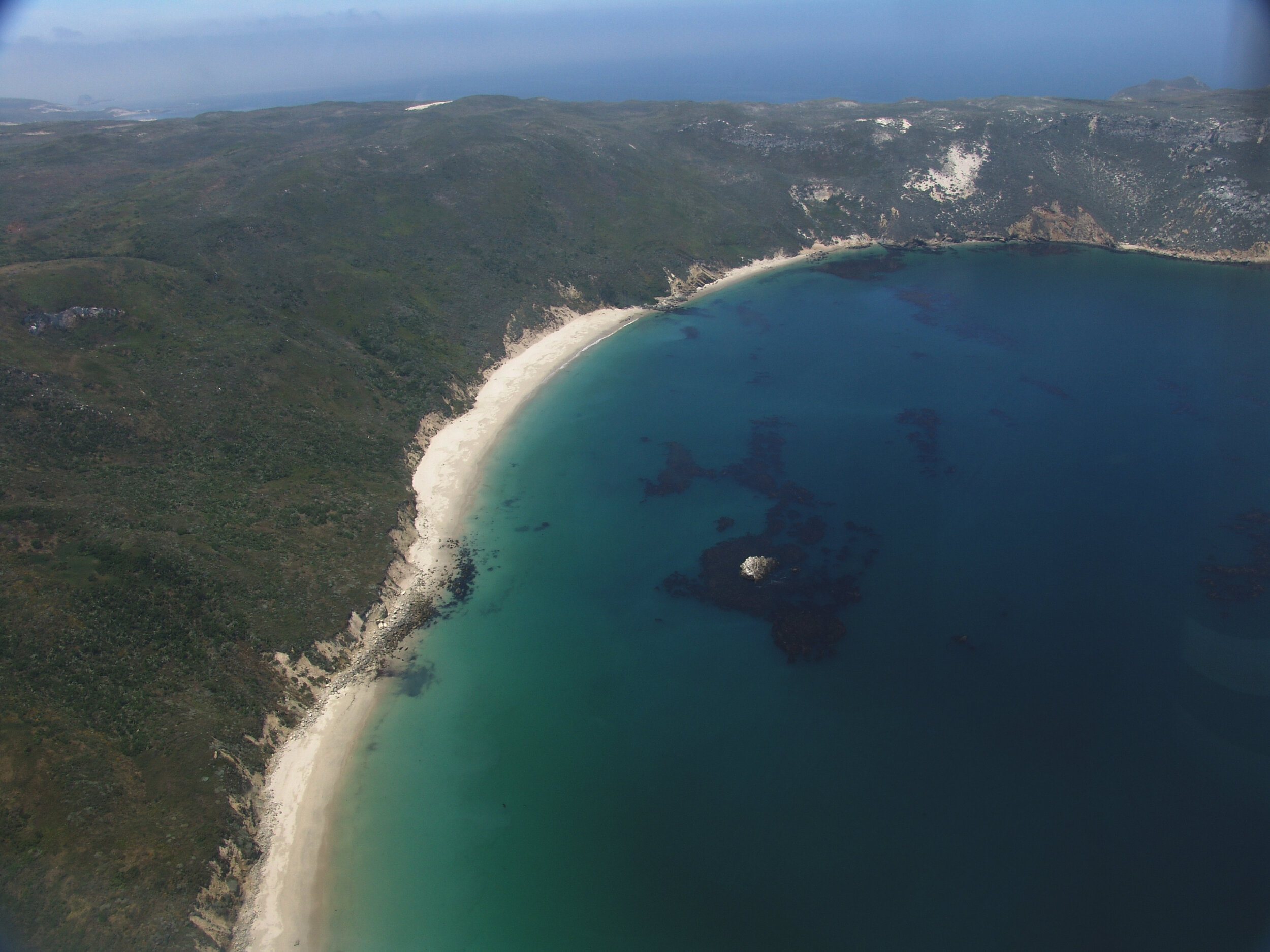

San Miguel Island
San Miguel Island
At 14 square miles, San Miguel (Chumash: *Tuqan*, translation unknown) is the third smallest of the eight Channel Islands. It is owned by the U.S. Navy, but the island is administered by Channel Islands National Park. Today, San Miguel is lush with vegetation but was once overgrazed and overrun with sheep. In the late 19th century it was no more than a desolate sand bar in the middle of the ocean.
San Miguel stands as a breeding ground for pinnipeds and seabirds. Cuyler Harbor on the island’s northern shore is lined with dunes and native vegetation and a large rock called “Prince Island” is just off shore. On a clear day, the views from Harris Point and Point Bennett are truly amazing, with the later covered in tens of thousands of pinnipeds.
Like with Santa Rosa, visiting San Miguel is not for the faint hearted. Much of the time the island is swept by howling winds, and visitors need to walk long distances to the campground and to some of the more interesting trailheads.
An aerial view of San Miguel Island looking down at the bay.
After you have experienced the more relatively placid environment of East Santa Cruz or Anacapa (or even Santa Rosa) San Miguel may present you with a bigger challenge, but you will also experience many rewards in beauty and adventure. This is also one of only two islands in Channel Islands National Park that the public can reach by plane.
The island has remarkable miles of untouched coastline and hikers who are daring enough can make the all-day excursion out to Point Bennett to see over 30,000 pinnipeds and island endemic wildlife like the island fox and deer mouse. Similar to Santa Cruz Island, the island fox is the largest animal on the island. Of course, marine animals like dolphins, gray whales, killers whales, porpoises and blue whales can all be found swimming in the coastal waters nearby.
CIR has worked with the National Park Service to remove Cirsium vulgare (bull thistle) and Erechtites glomerata (Australasian fireweed) and Centaurea melitensis (tocalote) on San Miguel Island. CIR staff and Board members have also volunteered for the National Park Service on the island.
A view of the bay on San Miguel Island from the land.
Castilleja Affinis blooming on San Miguel Island



